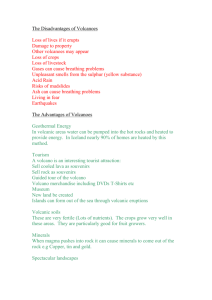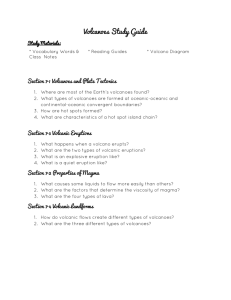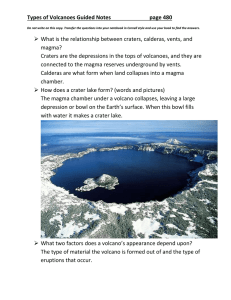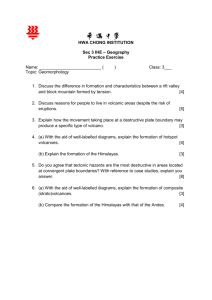File
advertisement
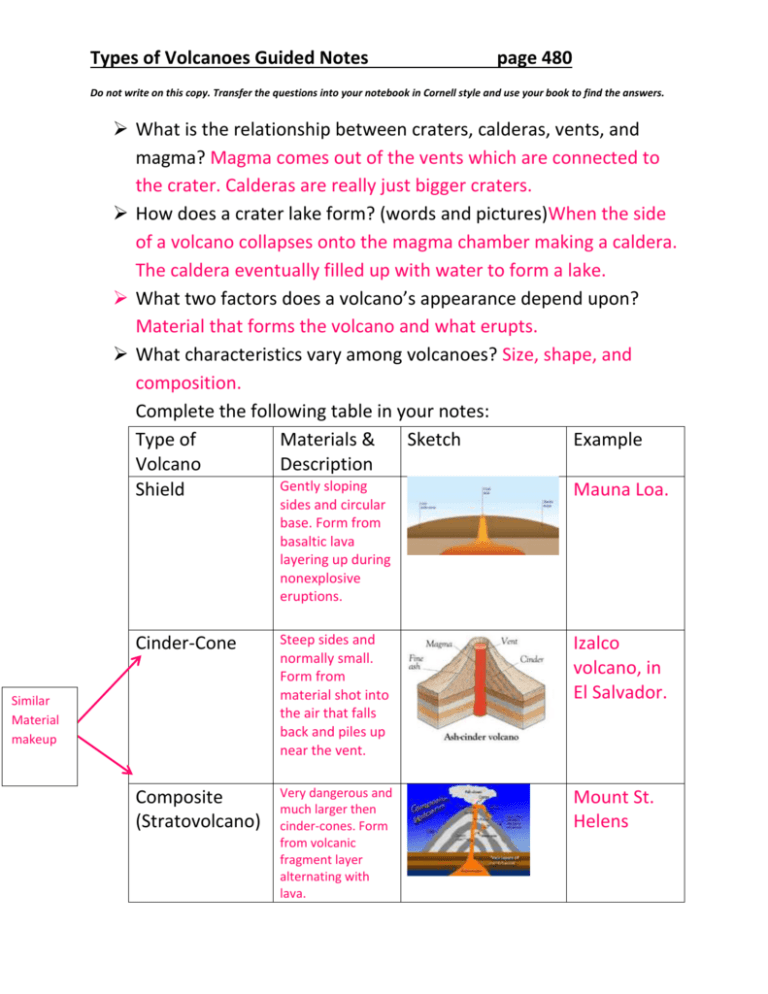
Types of Volcanoes Guided Notes page 480 Do not write on this copy. Transfer the questions into your notebook in Cornell style and use your book to find the answers. What is the relationship between craters, calderas, vents, and magma? Magma comes out of the vents which are connected to the crater. Calderas are really just bigger craters. How does a crater lake form? (words and pictures)When the side of a volcano collapses onto the magma chamber making a caldera. The caldera eventually filled up with water to form a lake. What two factors does a volcano’s appearance depend upon? Material that forms the volcano and what erupts. What characteristics vary among volcanoes? Size, shape, and composition. Complete the following table in your notes: Type of Materials & Sketch Example Volcano Description Gently sloping Shield Mauna Loa. sides and circular base. Form from basaltic lava layering up during nonexplosive eruptions. Cinder-Cone Steep sides and normally small. Form from material shot into the air that falls back and piles up near the vent. Izalco volcano, in El Salvador. Composite (Stratovolcano) Very dangerous and much larger then cinder-cones. Form from volcanic fragment layer alternating with lava. Mount St. Helens Similar Material makeup Types of Volcanoes Guided Notes page 480 Do not write on this copy. Transfer the questions into your notebook in Cornell style and use your book to find the answers. How do the volcanoes compare in terms of size and slope? Shield volcanoes are the largest, and the smallest are the cinder-cone. These cinder-cone volcanoes also have the steepest slope, (concave), while shield volcanoes have a very gentle slope (straight). What factors cause differences in size and slope? Material making up the volcano, vegetation growing on the slope, climate, and eruptive history. What is tephra? Rock fragments thrown in the air during volcanic eruptions. What is a pyroclastic flow? Rapidly moving volcanic material from an eruption. Where are most volcanoes found? Plate boundaries. Use the maps provided to show: (1) the Circum Pacific Belt and the Mediterranean Belt where convergent volcanism occur and (2) the Hawaiian Emperor Volcanic Chain. How do hotspots form? High temperature plumes of mantle material rise towards the surface. What do hotspots tell us about tectonic plates? They can tell us changes in plate motion, and the rate and direction of motion. The Circum Pacific Belt is shown in dark blue outline. Hawaiian Emperor Volcanic Chain is in here. Types of Volcanoes Guided Notes page 480 Do not write on this copy. Transfer the questions into your notebook in Cornell style and use your book to find the answers.


